On my recent visit to Japan, I visited several satsuki azalea nurseries with a group led by David Kreutz of Satsuki Bonsai-en in St. Louis. Dave’s been going to Japan for years and is a great guide for all things azalea. The first garden we visited was Zuishou Nakayama’s.
Nakayama’s garden has a lot of azaleas, and at first glance it can be a little overwhelming.

Satsukis everywhere
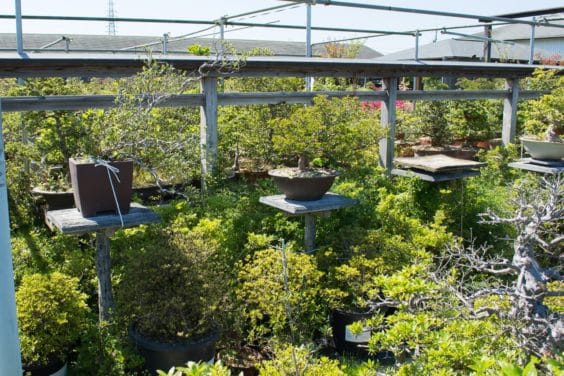
More satsuki azalea bonsai
After strolling past hundreds, if not thousands, of azaleas, I started taking a closer look at individual specimens. In general, the trees didn’t have tags we could read so we appreciated what we could based on the trunk, the branches, and the foliage.
As for the foliage, it often presented its own challenges.
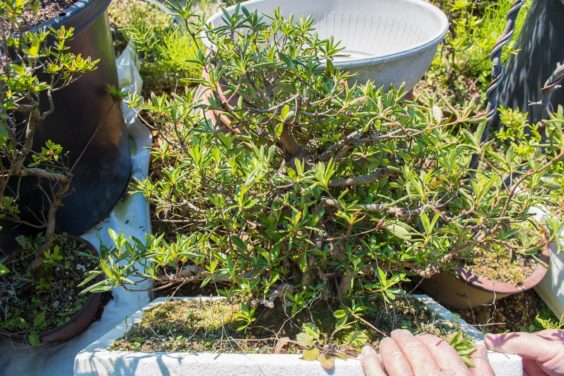
An abundance of shoots!
To get a better understanding of what was going on beneath the foliage, we had to reach in and glean what we could of the trunk and surface roots from glimpses.
Once in a while we came across trees that had recently been pruned and repotted. These were easy to appreciate.
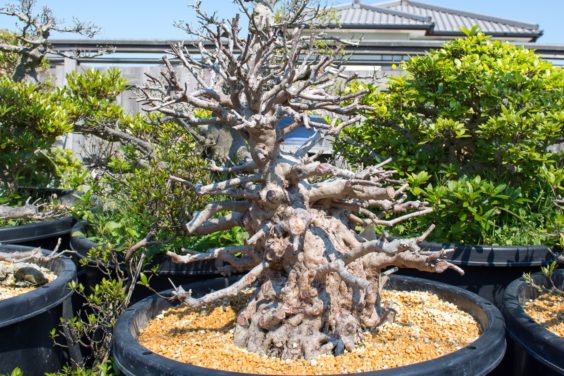
Freshly pruned azalea
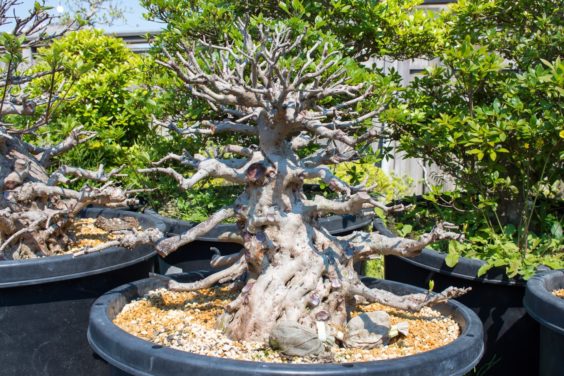
No secrets here
I spent a lot of time evaluating these trees as they were easy to appreciate – interesting movement and plenty of branches to work with.
What I most enjoyed about the azalea gardens we visited was seeing so many trees at different stages of development. Not only was the sequence of stages easy to follow, but some of the techniques used to refine the trees were on display too.
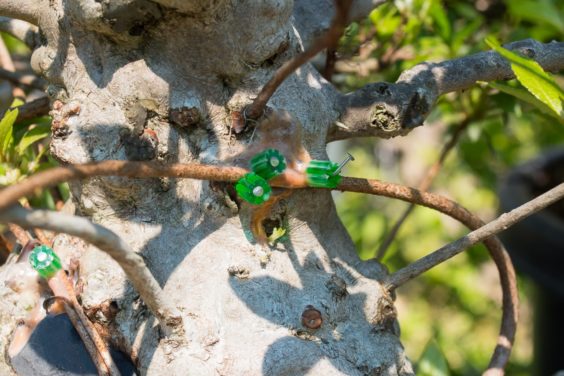
Bridge graft to close a small wound
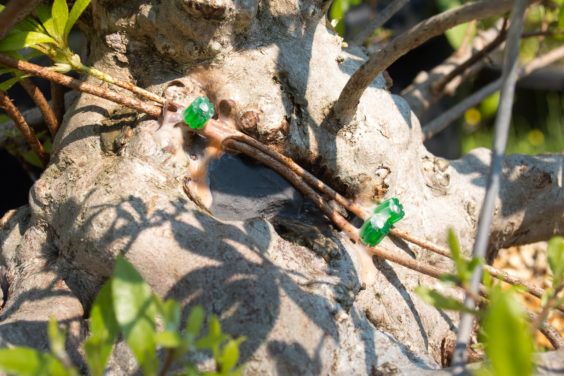
Double bridge graft across a large wound
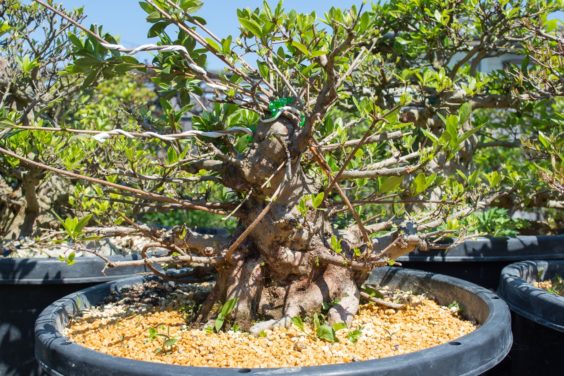
Multiple approach grafts to create new branches
We also saw a number of trees with fabric wrapped around the trunk. In general, this measure was intended to protect the trunks of varieties that were sensitive to the sun.
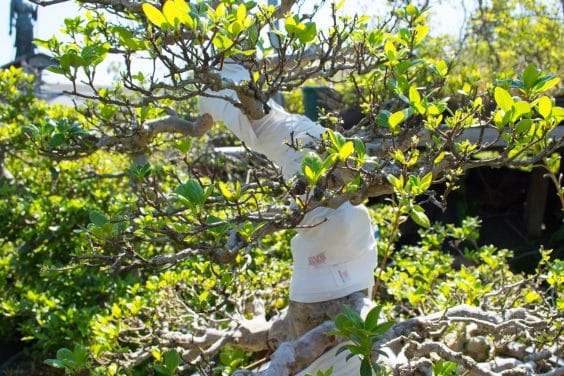
Protecting the trunk with a BVD t-shirt
I spent the rest of the afternoon appreciating some of the more developed specimens in the garden.
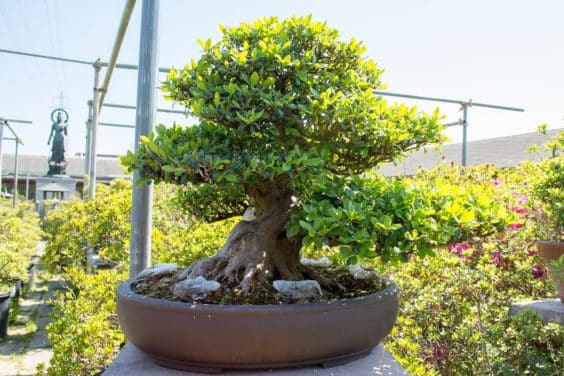
Medium-sized satsuki bonsai
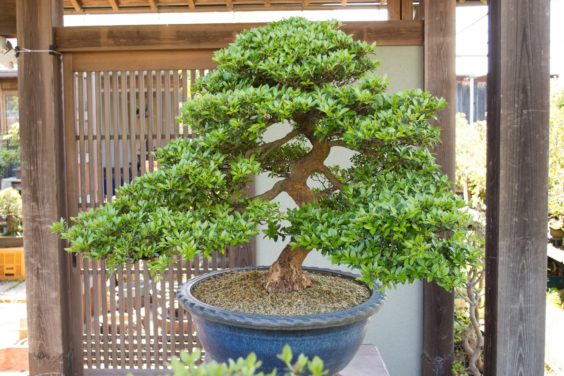
Large satsuki azalea
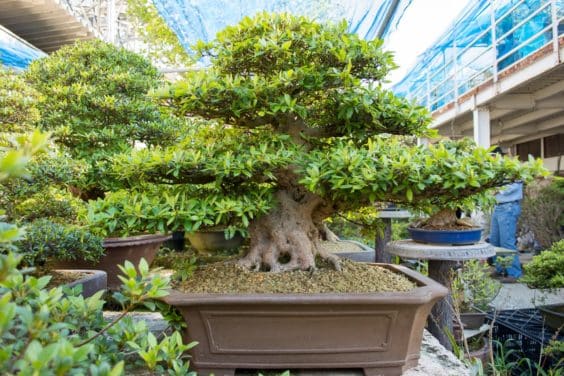
Medium-sized satsuki
Although our visit was about one month before peak bloom, the garden did have some color to offer.
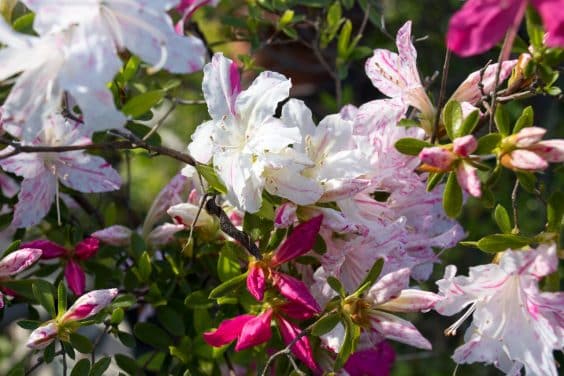
Satsuki blooms
Next up – reports from two Kanuma-based satsuki nurseries.
Subscribe to Bonsai Tonight
New Posts Delivered Every Tuesday and Friday
Piotr says
Very interesting. Do you know if they prune and repot the same year or do this in two growing seasons?
Jonas Dupuich says
Good question Piotr – from what I could tell, it looked like they repotted at a number of different times. Some trees were repotted in early spring, and others in late spring. When I visited, many trees were repotted right after they were pruned – and some during! I’d need to go back at different times of the year to get a better sense of the relationship between pruning and repotting.